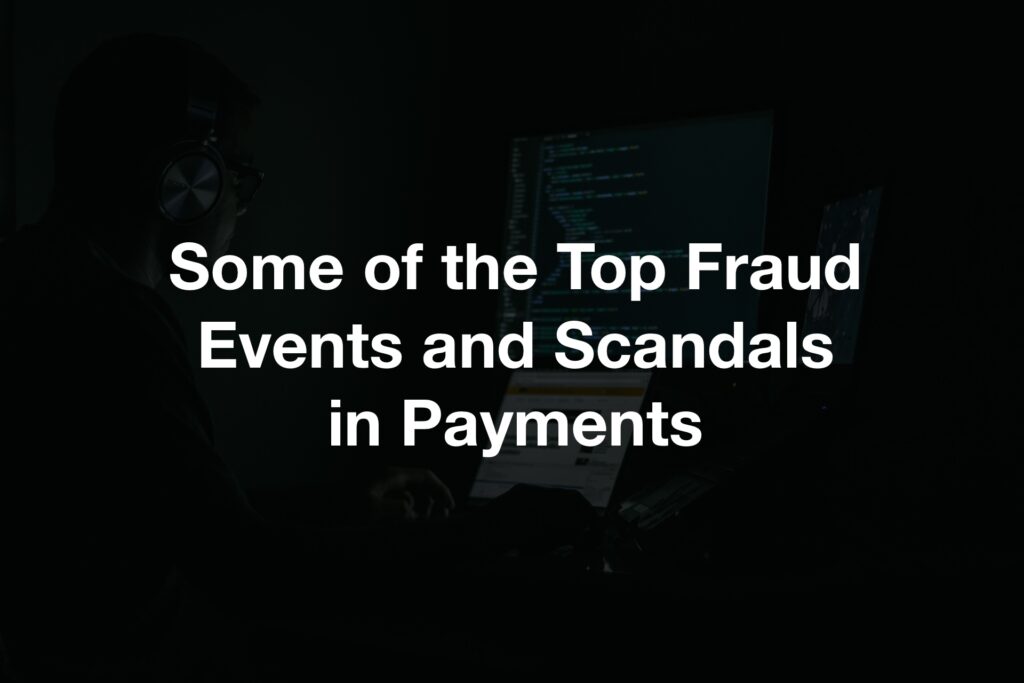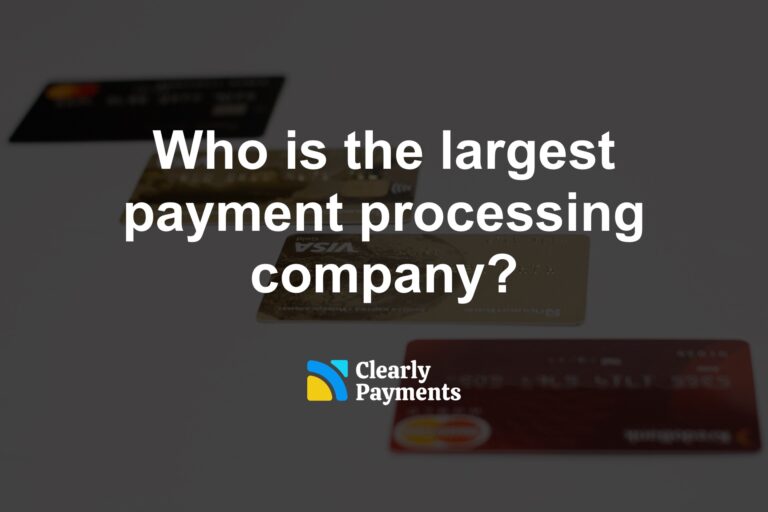In the world of payments, fraud is a constant threat that can have significant impacts on businesses and consumers alike. From large-scale data breaches to intricate schemes, fraudulent activities have left lasting marks on the financial landscape.
From the Target data breach that compromised millions of customer accounts to the collapse of Wirecard AG following revelations of accounting fraud, these fraud events serve as stark reminders of the vulnerabilities within payment systems. Additionally, the rise of digital currency platforms has introduced new challenges, as seen in the Liberty Reserve scandal, where billions of dollars were laundered through its platform. As technology continues to advance, fraudsters evolve their tactics, making it essential for businesses and regulators to stay vigilant and adapt to combat fraudulent activities effectively. In this article, we’ll cover into these events, examining their impact on the financial industry and highlighting the measures taken to prevent future occurrences.
In this article, we’ll explore some of the most notable fraud events in payments and overall finance. We’ll uncover the methods used, the consequences faced, and the lessons learned from these events.
Target Data Breach (2013)
In the saga of payment processing fraud, few chapters loom as large as the Target data breach of 2013. What began as a routine cyber intrusion swiftly snowballed into one of the most expansive breaches in history. Cybercriminals infiltrated Target Corporation’s network, plundering the personal and credit card information of over 110 million customers. This breach, striking during the peak holiday shopping frenzy, jolted the retail industry and shattered consumer trust in one of America’s retail giants.
- Over 40 million credit and debit card accounts compromised.
- Estimated financial losses exceeding $200 million.
- Substantial decline in Target’s stock value and reputation damage.
CardSystems Solutions Data Breach (2005)
In 2005, CardSystems Solutions found itself at the epicenter of a seismic data breach that rippled across the financial sector. The breach exposed the sensitive credit card information of millions, igniting concerns over data security and regulatory oversight.
The breach involved several key steps: First, hackers identified and exploited weaknesses in CardSystems Solutions’ network security protocols, likely through techniques such as SQL injection or malware infiltration. Once inside the system, they accessed and extracted sensitive credit card data, including card numbers, expiration dates, and cardholder names, from the company’s databases. The stolen data was then exfiltrated from the network and, ultimately, used for fraudulent purposes, including unauthorized purchases and identity theft. The breach not only compromised the security and privacy of millions of individuals but also triggered significant regulatory scrutiny and legal repercussions for CardSystems Solutions, including hefty fines and legal settlements.
- Compromise of over 40 million credit card accounts.
- Imposition of fines and legal repercussions against CardSystems Solutions.
- Heightened scrutiny of data protection measures in payment processing.
Operation Phish Phry (2009)
Operation Phish Phry stands as a testament to the cunning and audacity of cyber criminals orchestrating large-scale payment processing fraud. Operation Phish Phry was an elaborate international cybercrime operation that targeted individuals from various financial institutions through sophisticated phishing techniques.
Cybercriminals orchestrated the scheme by sending convincing phishing emails posing as legitimate entities, prompting recipients to enter sensitive personal and financial information on counterfeit websites designed to mimic trusted institutions. With harvested data, perpetrators conducted unauthorized transactions, including wire transfers and credit card purchases, exploiting compromised accounts for financial gain.
The operation also involved money laundering tactics to obscure the origins of stolen funds. Eventually, law enforcement agencies intervened, leading to the arrest and prosecution of numerous individuals involved in the scheme, highlighting the complexity and magnitude of modern phishing fraud and emphasizing the critical need for robust cybersecurity measures and user awareness to combat such criminal activities.
- Millions of dollars were pilfered through unauthorized transactions.
- Arrest and prosecution of numerous individuals involved.
- Elevated awareness of phishing scams and cybersecurity threats.
Liberty Reserve (2013)
Liberty Reserve, once touted as a digital currency haven, plunged into infamy as a hub for money laundering and illicit financial activities. Its demise in 2013 laid bare the extent of its fraudulent operations, sending shockwaves through the global financial community.
Operating under the guise of providing anonymous financial transactions, Liberty Reserve allowed users to open accounts without verifying their identities. Criminals took advantage of this anonymity to launder illicit funds by transferring them between accounts within the platform, effectively obscuring the money’s origins. The scheme thrived due to lax security and regulatory oversight until law enforcement shut down Liberty Reserve and indicted its founders for facilitating money laundering. This case underscored the dangers of unregulated digital currency services and the need for stricter regulations to prevent such scams.
- Billions laundered through Liberty Reserve’s platform.
- Indictment of founders for operating an unlicensed money-transmitting business.
- Escalated regulatory scrutiny of digital currency services and money laundering controls.
Wirecard Scandal (2020)
The Wirecard scandal of 2020 rattled the financial realm, unraveling one of Germany’s premier payment processing entities in a spectacular implosion. Revelations of accounting fraud and financial irregularities led to Wirecard’s downfall, prompting probing questions about regulatory oversight and corporate governance.
The scandal revealed widespread accounting fraud and financial irregularities amounting to approximately €1.9 billion ($2.1 billion). This scandal not only resulted in the insolvency of Wirecard AG but also triggered extensive regulatory scrutiny, investor losses, and significant reputational damage to Germany’s financial sector. The magnitude of the Wirecard scandal highlighted systemic failures in regulatory oversight and corporate governance, leading to calls for reform and increased transparency in the financial industry.
- Exposed accounting fraud tallying billions.
- Wirecard AG’s collapse and ensuing insolvency.
- Eroded investor confidence and intensified regulatory scrutiny.
Wells Fargo Scandal (2009)
The Wells Fargo fake account scandal, spanning from 2009 to 2016, stands as a stark reminder of ethical breaches within even esteemed financial institutions. Rooted in a toxic culture of sales pressure and incentivized quotas, this scandal unmasked a distressing pattern of deception and manipulation within Wells Fargo.
During this period, thousands of Wells Fargo employees were found to have created millions of unauthorized accounts and credit cards in customers’ names, without their knowledge or consent. While the exact financial impact of the scandal is difficult to quantify, it resulted in substantial fines and settlements for Wells Fargo, totaling billions of dollars. The fallout from the scandal also prompted significant changes within the bank, including the resignation of its CEO and the implementation of new policies and procedures to prevent similar misconduct in the future. Overall, the Wells Fargo scandal was one of the largest and most impactful fraud events in the history of the banking industry.
- Customers suffered financial losses due to fees on unauthorized accounts.
- Wells Fargo’s reputation crumbled, engendering public outcry and eroding trust.
- The bank faced staggering fines and settlements as restitution.
Salami Fraud (1995) aka "Office Space"
One of the most unique and somewhat amusing payment processing frauds in history is the “Salami Slicing” technique, also known as “Salami Fraud” or “Salami Technique.”
Originating in the 1970s, this method involves stealing small amounts of money from numerous transactions, akin to slicing thin pieces off a salami. The idea is to make each theft insignificant enough to go unnoticed, but collectively, these small amounts add up to a significant sum.
The scheme was famously depicted in the 1999 movie “Office Space,” where employees at a fictional software company use a computer virus to skim fractions of a cent from financial transactions, accumulating a substantial sum over time.
One notable example of a large-scale “Salami Slicing” fraud occurred in the banking sector and involved a programmer named Vladimir Levin. In the mid-1990s, Levin, a Russian computer programmer, orchestrated one of the most significant electronic banking frauds in history.
Levin hacked into the computer systems of Citibank, exploiting a vulnerability in their electronic transfer system. Instead of directly transferring large sums of money, Levin employed a sophisticated “Salami Slicing” technique. He programmed the system to transfer small amounts, typically ranging from $10 to $20, from thousands of accounts into his accounts spread across various locations worldwide.
Over several months, Levin managed to siphon off approximately $10 million from Citibank accounts using this method. The amounts were small enough to evade immediate detection, and the transfers appeared as routine transactions among the vast volume of daily banking activities.
However, Citibank eventually became aware of the fraudulent activity and launched an investigation in collaboration with law enforcement agencies. The FBI ultimately apprehended Levin in 1995 in the UK, and he was subsequently extradited to the United States to face trial.
The history of payment processing fraud is punctuated by cataclysmic events that imprint enduring scars on the global financial canvas. As technology advances and transactions evolve, the imperative for fortified security measures and vigilant regulatory oversight becomes paramount. Only through collective endeavors to bolster cybersecurity protocols and enhance regulatory scrutiny can we fortify the financial system’s integrity and safeguard against the perils of payment processing fraud.




